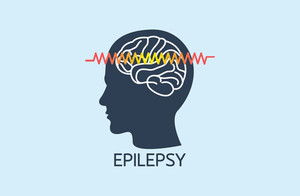Regulatory bioequivalence rules for generics are well established and recognized. However, proving bioequivalence may not always be so easy, especially with drugs with a narrow therapeutic index (NTI) [1].
What is meant by a generic medication and generic drug equivalence
Generic compounds only need to provide evidence of bioequivalence in a small number of healthy volunteers (< 100). US Food and Drug Administration (FDA) bioequivalence rules require that the ratio of the area under the curve of the generic drug (AUCgeneric) to AUCreference and maximum plasma concentration of the generic (Cmax-generic) to Cmax-reference fall between 0.80–1.25, (80%–125% of the reference medication), at the 90% confidence interval for AUC and Cmax.
What is the meaning of a narrow therapeutic index
NTI drugs are drugs where small differences in dose or blood concentration may lead to serious therapeutic failures and/or adverse drug reactions that are life-threatening or result in persistent or significant disability or incapacity. Drugs are considered to have an NTI when comparison of the 50% median effective dose (ED50) and 50% median lethal dose (LD50) is ≤ 2. The European Medicines Agency (EMA) requires bioequivalence of 90%–111% for NTI drugs. However, bioequivalence does not compare batch-to-batch nor country-to-country variations. In addition, drug interactions, with concurrent medications, is inadequately addressed by studies in healthy volunteers.
Relevance to the treatment of epilepsy
Some anti-seizure medications (ASMs) have >10 generic drug alternatives. Problems may arise when substituting generic drug formulations, especially if one is at 80% and the other is at 125% bioequivalence, thereby effectively either doubling or halving the effective dosage, a situation that could have potentially serious consequences. Using ‘trade’ names of the ASMs is permissible with electronic prescriptions if the generic drug constituents are provided.
In Australia, prescribers can prohibit the substitution of generics, however, this is not always respected by the pharmacists. A hospital patient with epilepsy (PWE) was given a generic drug causing break-through seizure. Had she been injured, given the fact that the substitution was given without advice or consent, the hospital may have been subject to litigation.
Generic drug substitution requires advice and the patient’s consent. Prescribing using trade names may avoid brand substitution.
In the following series of articles, the author discusses how and why generic drug substitution may have a negative impact on patient wellbeing and the delivery of optimal clinical care. He also examines the legal consequences of not advising the patient should generic drug substitution be exercised.
Conflict of interest
The author of the research paper [1] declared that there was no conflict of interest.
Abstracted by Professor Roy G Beran, Neurology Department, Liverpool Hospital, Liverpool 2170, NSW, Australia.
Editor’s comment
Readers interested to learn more about narrow therapeutic index drugs are invited to visit www.gabi-journal.net to view the following manuscript published in GaBI Journal:
Bioequivalence of narrow therapeutic index drugs and immunosuppressives
GaBI Journal is indexed in Embase, Scopus, Emerging Sources Citation Index and more.
Readers interested in contributing a research or perspective paper to GaBI Journal – an independent, peer reviewed academic journal – please send us your submission here.
GaBI Journal Citation Impact
1.9 – CiteScore 2020 (calculated on 5 May 2021)
2.2 – CiteScoreTracker 2021 (Last updated on 6 April 2022)
Submit a manuscript to GaBI Journal
Related articles
What is the meaning of a narrow therapeutic index?
What is meant by a generic medication and generic equivalence?
Consequences of generics being favoured by healthcare providers
The cost of developing drugs and use of generics
The therapeutic equivalence of brand-name and generic narrow therapeutic index (NTI) cardiovascular drugs
| LATIN AMERICAN FORUM The new section of the ‘Latin American Forum’ on GaBI has been launched. The objective of this new section is to provide you with all the latest news and updates on developments of generic and biosimilar medicines in Latin America in Spanish. View this week’s headline article: Nomenclature of biologicals and biosimilars in Peru Browse the news in the Latin American Forum! Register to receive the GaBI Latin American Forum newsletter. Inform colleagues and friends of this new initiative. LATIN AMERICAN FORUM Se ha lanzado la nueva sección del ‘Foro Latinoamericano’ sobre GaBI. El objetivo de esta nueva sección es brindarle las últimas noticias y actualizaciones sobre desarrollos de medicamentos genéricos y biosimilares en América Latina en español. Vea el artículo principal de esta semana: Nomenclature of biologicals and biosimilars in Peru !Explore las noticias en el Foro Latinoamericano! Regístrese para recibir el boletín informativo GaBI Foro Latinoamericano. Informe a colegas y amigos sobre esta nueva iniciativa.
|
Reference
1. Beran RG. Generic substitution in patients whose illness has a narrow therapeutic index, such as epilepsy. APHE. 2020;1(2):1-5.
Permission granted to reproduce for personal and non-commercial use only. All other reproduction, copy or reprinting of all or part of any ‘Content’ found on this website is strictly prohibited without the prior consent of the publisher. Contact the publisher to obtain permission before redistributing.
Copyright – Unless otherwise stated all contents of this website are © 2022 Pro Pharma Communications International. All Rights Reserved.








 0
0











Post your comment